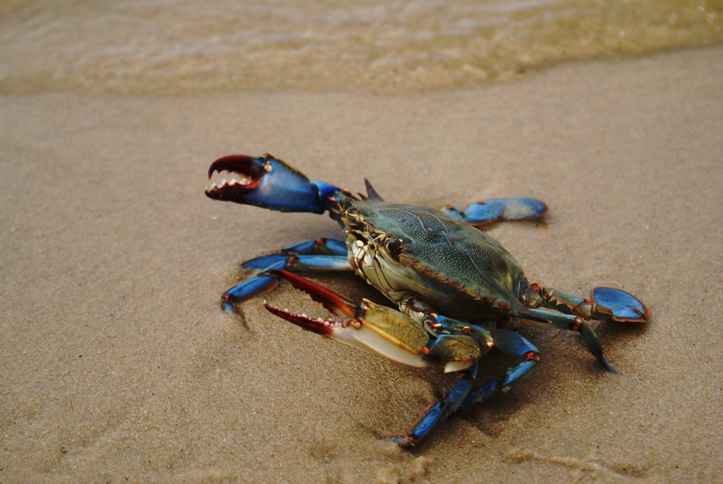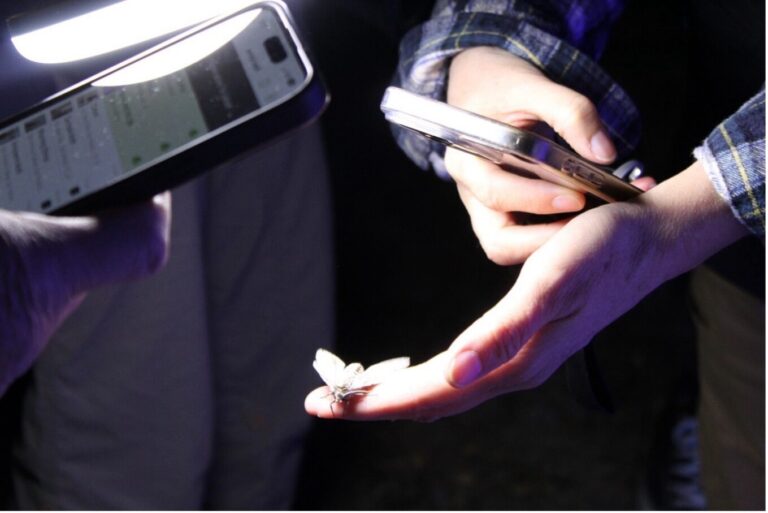Last Updated on January 30, 2024
In honor of World Wetlands Day (February 2), we’re using today’s blog to honor an essential species in the wetland and marsh ecosystems of San Antonio Bay: the Atlantic blue crab!
While scientists at the San Antonio River Authority (River Authority) might know of the blue crab due to the species’ reliance on the San Antonio River’s freshwaters, many Texans know blue crabs for their rich, buttery meat. In fact, their scientific name, Callinectes sapidus, translates in Latin to “beautiful savory swimmer.” However, blue crabs are more than just delicious! These amazing arthropods are a crucial component of wetland food webs, providing sustenance for herons, sea turtles, large fish like the red drum, and the endangered whooping crane. Keep reading for more details on these crustaceans – we bet you won’t be crabby!
Why are wetlands important?
You might be surprised to learn that the San Antonio River flows 240 miles southeast of its central San Antonio headwaters. It merges with the Guadalupe River, and these combined waters empty into San Antonio Bay on the South Texas coast. San Antonio Bay is made up of a complex network of wetlands, including marshes and estuaries: dynamic ecosystems that support a diverse community of plants and wildlife. Many migratory birds who navigate the North American Central Flyway rely on these estuarine ecosystems along the Texas coast to rest before continuing their journey.
San Antonio Bay
Savory Swimmers
Atlantic blue crabs are the most common edible crab along the Atlantic Coast and the Gulf of Mexico and have a significant amount of culinary and economic importance in the United States. As crustaceans, blue crabs have an exoskeleton they shed many times throughout their lives in a process called molting, or “ecdysis.” Because the crabs’ new exoskeleton is soft just after ecdysis, these crabs are known as “soft-shelled” crabs. Atlantic blue crabs can live up to four years and will shed their stunning blue and olive-green colored shell up to 20 times! How big do they get? The largest blue crab ever caught (in Chesapeake Bay) weighed 1.1 pounds and measured 10.7 inches across the shell from spine to spine!
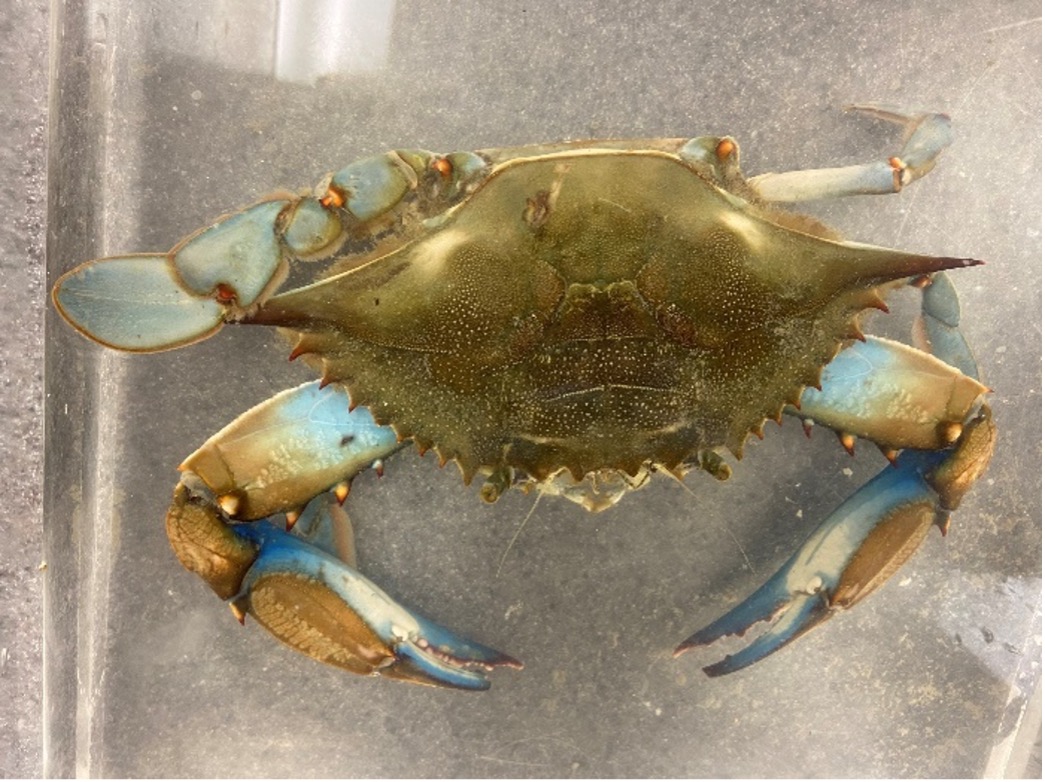
Did you know? Blue crabs are decapods, which means they have ten appendages, each with specific jobs! The front two legs are claws, the middle six are walking legs, and the back two are swimmerets.
Jimmy, Sally, or Sook?
It’s easy to tell male (“jimmy”) and female (“sally”) crabs apart; check their apron! The apron is an abdomen covering shaped entirely differently depending on the crab’s sex. Blue crab enthusiasts say that the T-shaped apron of a male crab looks like the Washington Monument, while a female’s apron is more V-shaped. In addition to a differently shaped apron, female blue crabs also have red tips on their claws. When a female crab reaches maturity (“sook”), their apron takes on a rounder shape akin to the Capitol Dome. It is also free to open so she can carry eggs. A female crab carrying eggs in her apron is known as a “sponge” or “berry” crab. Sponge crabs have from 750,000 to 8 million eggs, and only one in every 1 million eggs survives into an adult crab.
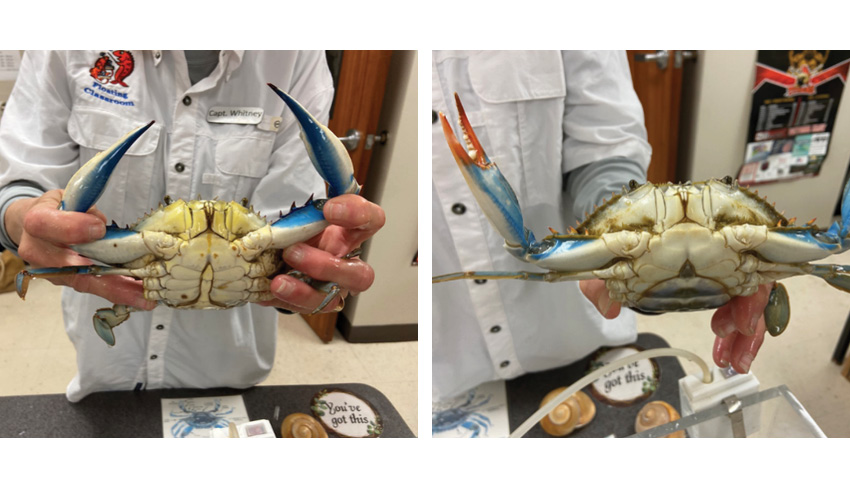
Captain Whitney of the Texas Floating Classroom shows the aprons of Atlantic blue crabs. Can you tell which is a “jimmy” or “sally”?
Bottom Dwellers
Atlantic blue crabs are bottom-dwelling creatures, burrowing into soft mud or seagrasses to hide from predators and ambush their prey. Blue crabs are aggressive scavengers that eat a varied diet of clams, oysters, mussels, dead fish, and plant and animal detritus. They are one of the top consumers in benthic communities.
Blue Crabs in Danger
Poor water quality and habitat loss are the two biggest threats to Atlantic blue crabs in San Antonio Bay. According to the United Nations, at least 35% of the world’s wetlands have been lost since 1970. Available water within river systems is finite, and there is often competition between human and environmental needs for those limited natural resources. We all need fresh water! Humans require drinking water and water for manufacturing, farming, power, and recreation. Aquatic and riparian habitats, including bays and estuaries, also need fresh water for fish, plants, and other wildlife species. As the population of Texas booms and the demand for water resources grows, the ability to effectively manage and preserve the freshwater flowing into estuaries is becoming increasingly important.
Development upstream can have serious impacts downstream. The San Antonio and Guadalupe Rivers flow into San Antonio Bay, keeping the saltiness of the ecosystems low enough for blue crabs to reproduce. These rivers also carry nutrients and sediments that support estuarine communities. Unfortunately, stormwater runoff from city streets, residential neighborhoods, and rural farmland can introduce harmful contaminants and bacteria into the San Antonio River, directly affecting the animals that live there.
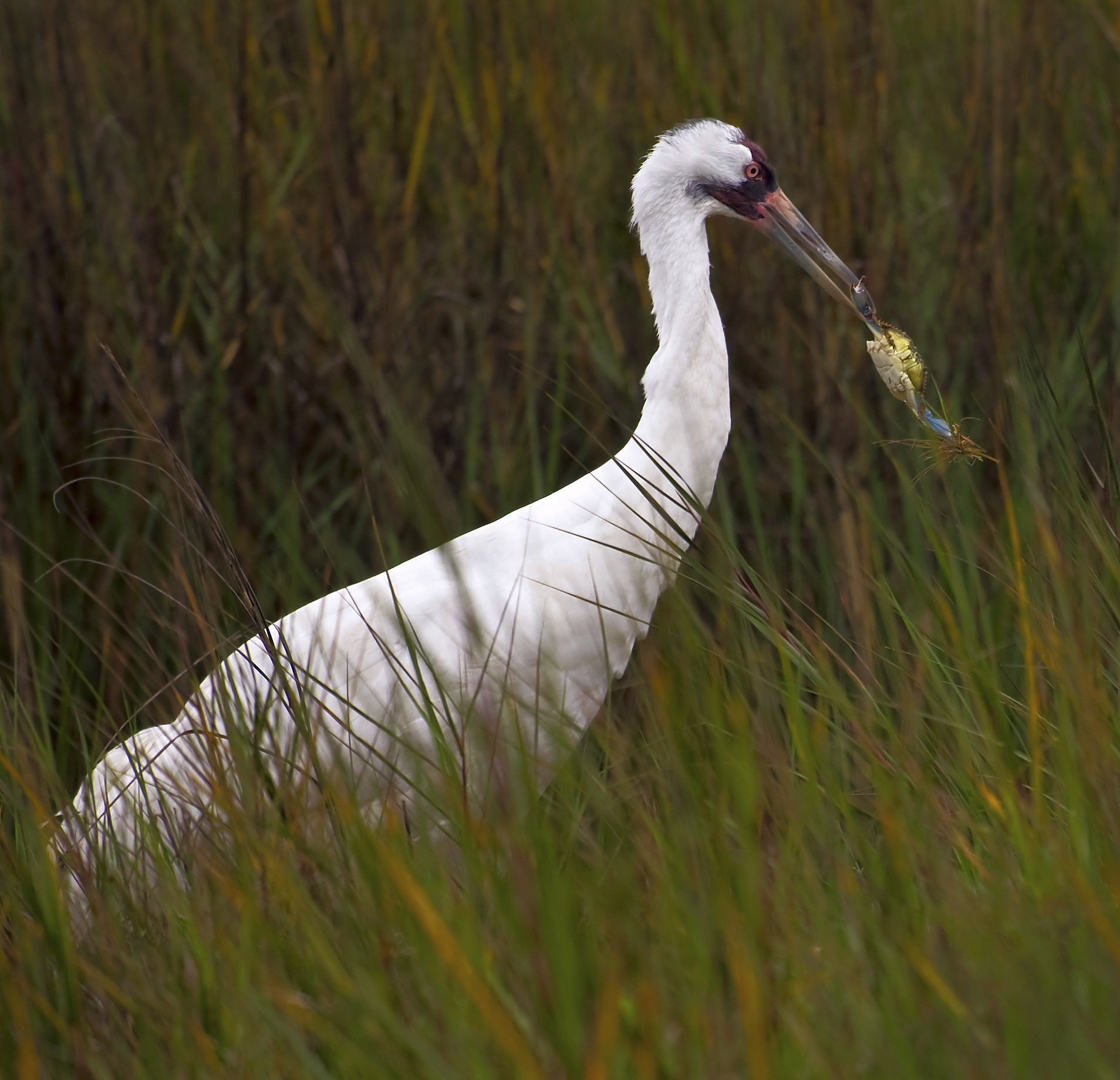
Healthy waters upstream contribute to healthy waters downstream, where blue crabs, whooping cranes, and many other species rely on a clean habitat for survival.
How to Help Blue Crabs
We must raise awareness about wetlands and how our actions upstream affect them so we can reverse their rapid loss and the loss of species that call them home.
Here are some ways you can help Atlantic blue crabs today!
- Catch crabs responsibly! Crabbing is an inexpensive and easy activity for the whole family. Before heading out, check the Texas Parks and Wildlife Department’s rules and regulations. Keep in Mind: Catching “sponge” crabs – female crabs with eggs – is illegal.
- Be mindful of your own water use. Implementing water conservation practices throughout the year, particularly in Bexar County, can help maintain enough water in the Edwards Aquifer to keep spring flow entering the San Antonio River.
- Learn more about them!
- Attend the upcoming Annual Whooping Crane Festival in Port Aransas, TX, held February 23-26, 2023
- Watch Blue Crab 101 from the Chesapeake Bay Foundation
Working together, we can ensure these charming crustaceans have a future in San Antonio Bay!

